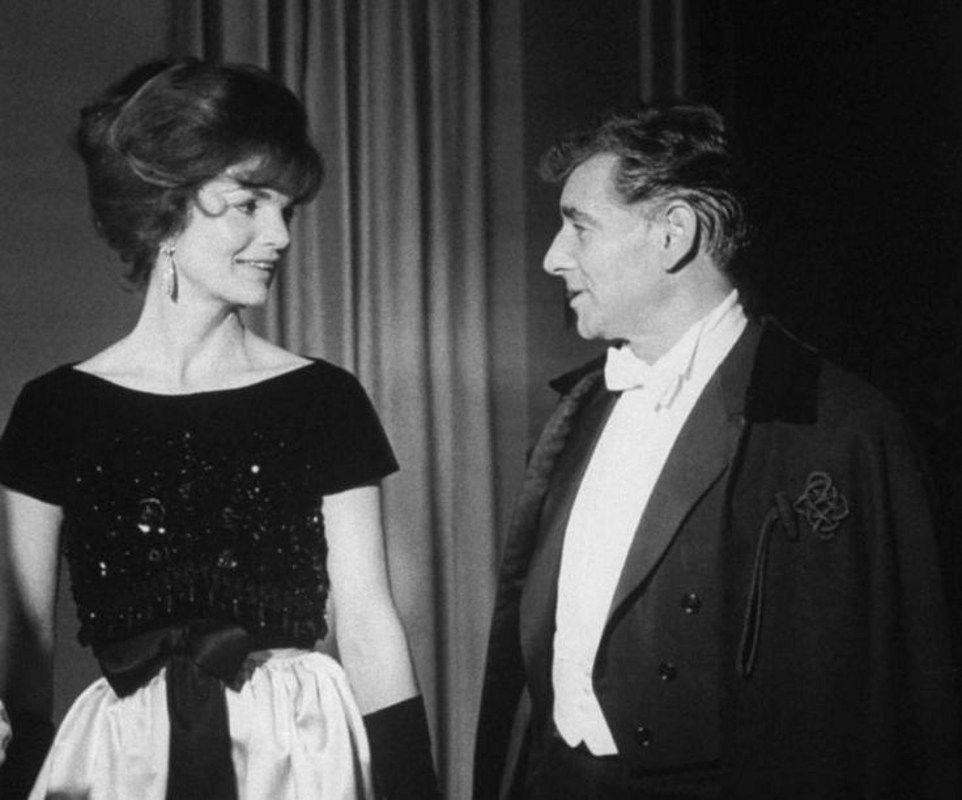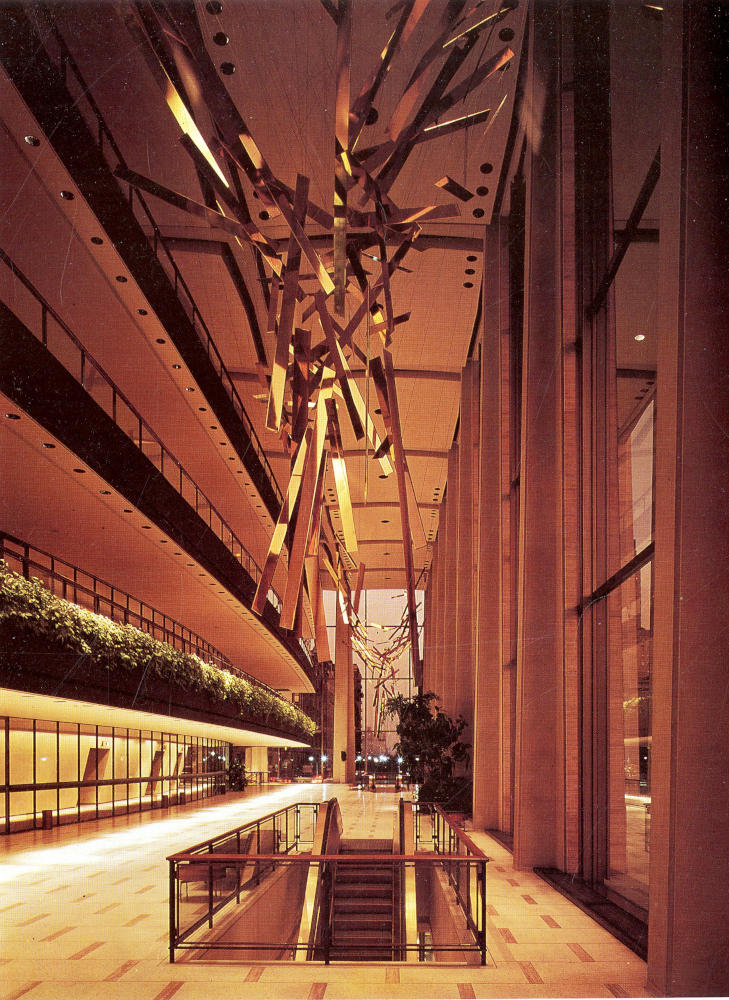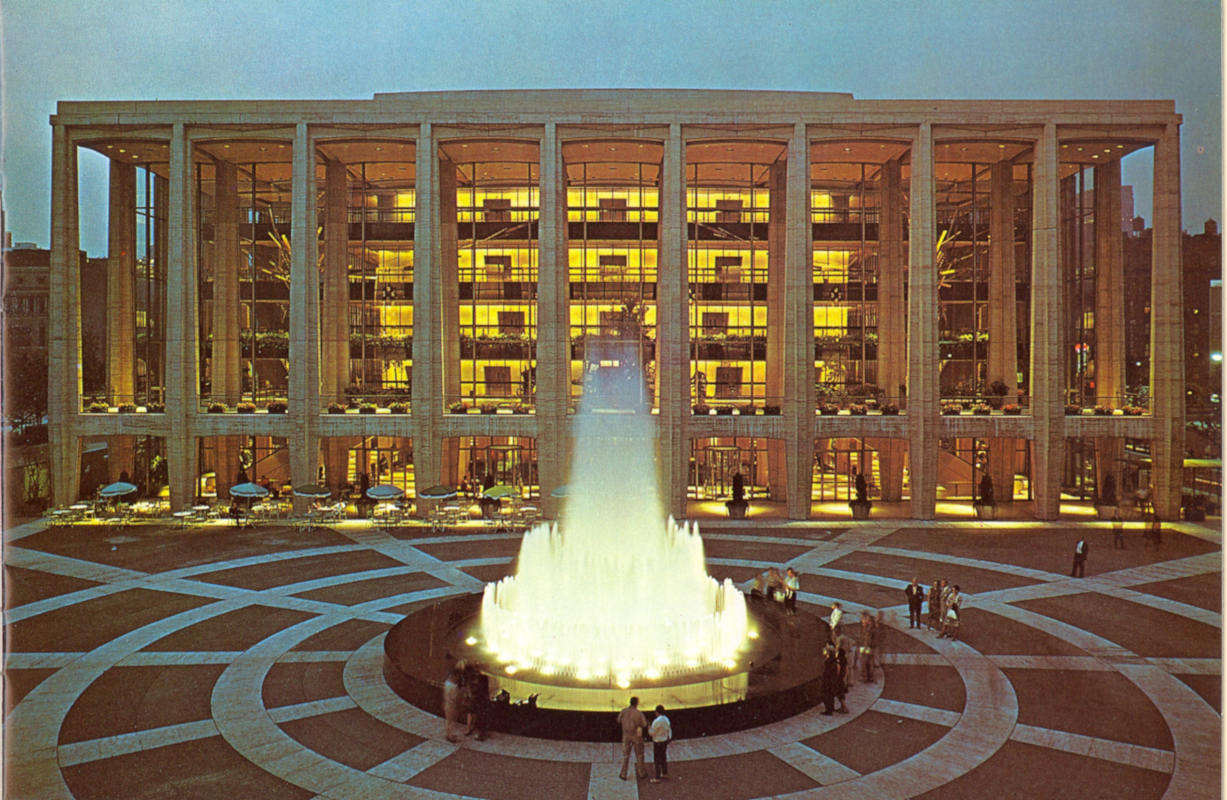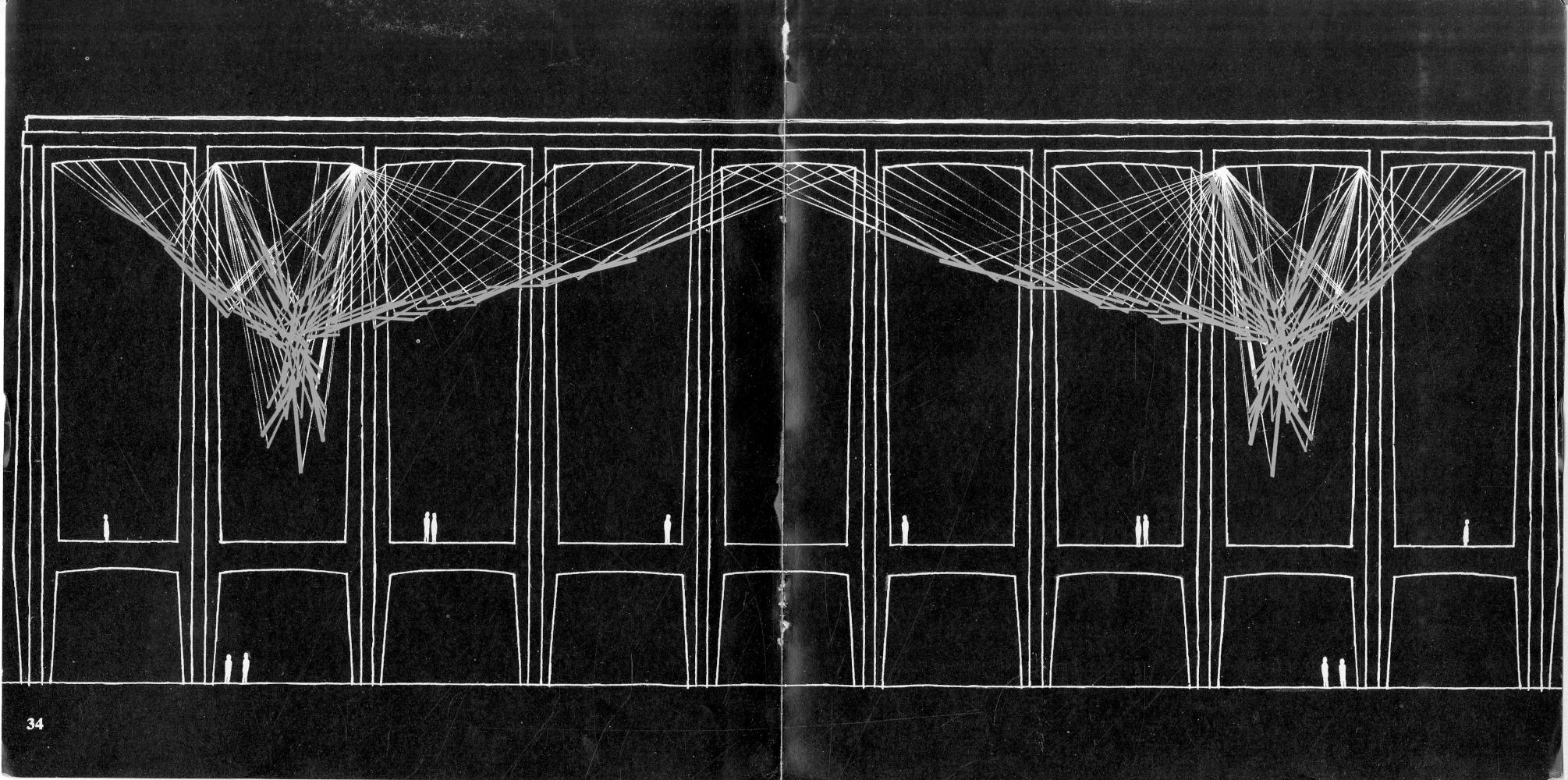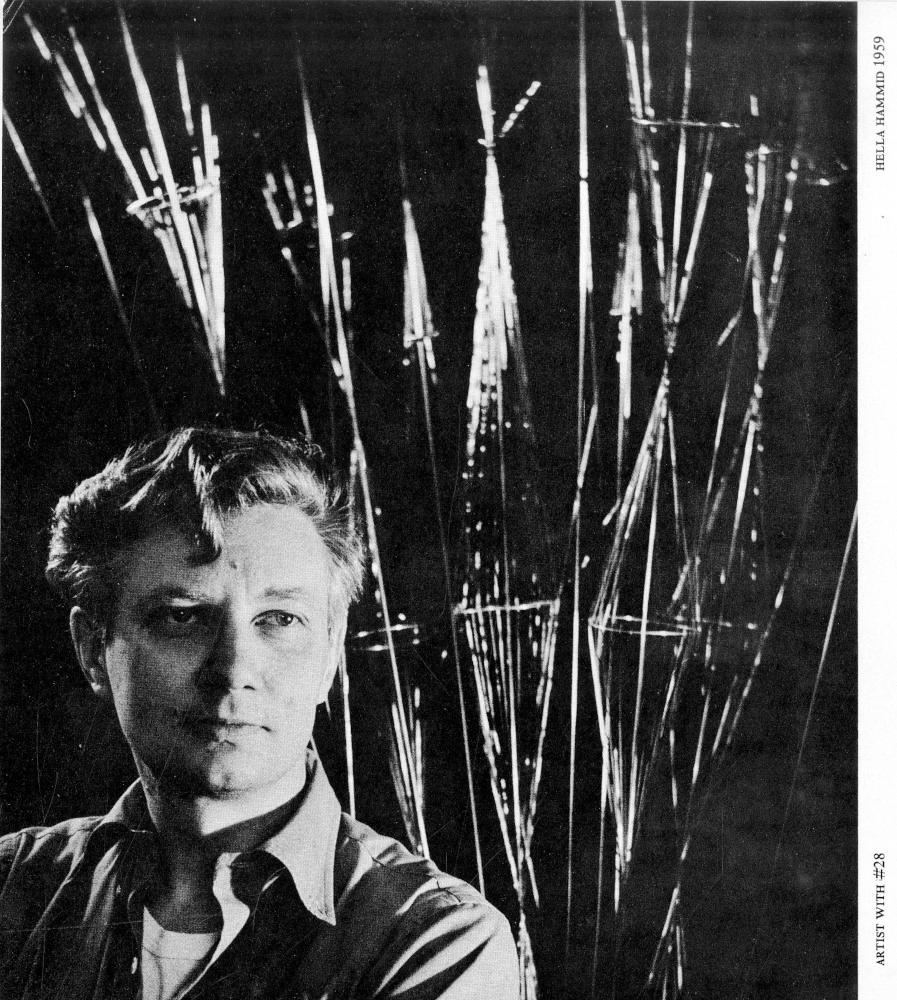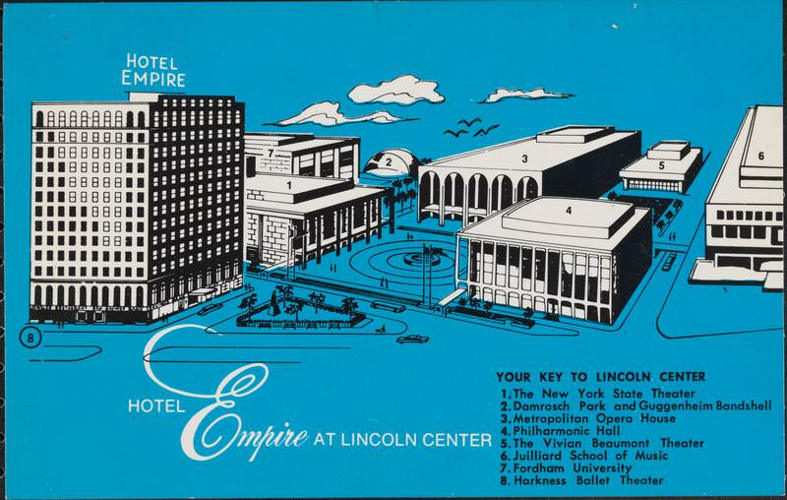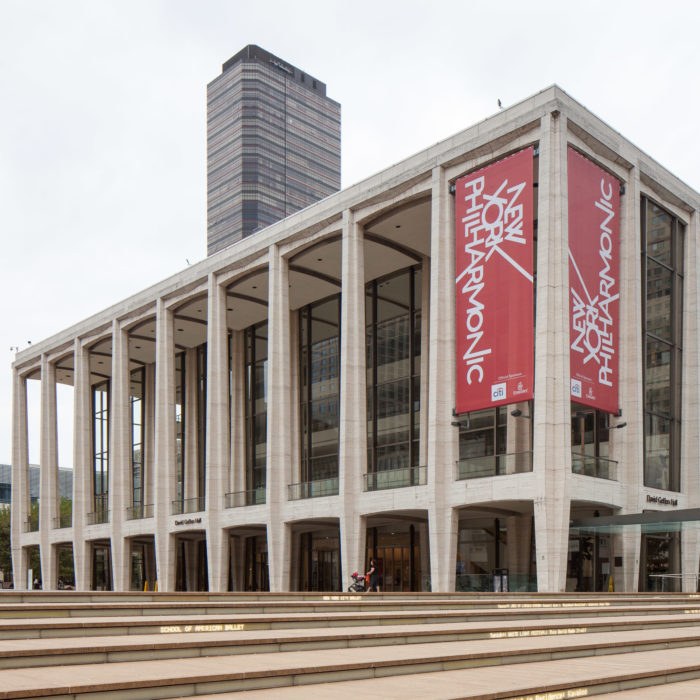
Lincoln Center: Philharmonic Hall
overview
Lincoln Center, a world-class performing arts center, has had close connections to the LGBT community since planning began in the mid-1950s.
Philharmonic Hall (now the David Geffen Hall), completed in 1962, has been associated with several major LGBT artists, including, among others, composers Leonard Bernstein and Aaron Copland and sculptor Richard Lippold, whose sculpture Orpheus and Apollo (1962) hung in the lobby until its controversial removal in 2014.
History
Planning for Lincoln Center, one of the world’s major cultural centers, began in the mid-1950s. Ground was broken in 1959 and within a decade six theaters, a school, a library and museum, a fountain, and landscaped parks, all with Modern works of art, had been completed. The complex includes three main buildings that surround the plaza and fountain: the Metropolitan Opera House, the New York State Theater (now the David H. Koch Theater), and what was originally Philharmonic Hall, the first building in the complex to be completed. Philharmonic Hall was renamed Avery Fisher Hall in 1973 and then renamed again for Brooklyn-born, entertainment mogul and philanthropist David Geffen in 2015. These buildings and the Vivian Beaumont Theater, the New York Public Library, and the Juilliard School were designed by leading American architects and all are faced in Italian travertine. Damrosch Park is located at the southwest corner.
On September 23, 1962, Leonard Bernstein conducted Philharmonic Hall’s inaugural concert which included a new piece, Connotations, by Aaron Copland. Besides Copland, other composers attending the opening-night concert were Samuel Barber, Henry Cowell, and Virgil Thomson.
Philharmonic Hall’s architect, Max Abramovitz, commissioned a large, site-specific work for the building’s Promenade from sculptor Richard Lippold, a sculptor who specialized in large public art works completed in conjunction with architects, including the bronze rods that hang from the ceiling of the bar room in the former Four Seasons Restaurant in the Seagram Building and “Flight” in the Vanderbilt Avenue entrance to the Pan Am (now Met Life) Building. The Lincoln Center piece, entitled “Orpheus and Apollo,” is generally considered to be Lippold’s masterpiece. This enormous 190-foot-long work consisting of two irregular groups of 190 thin cascading plates of Muntz (an alloy of copper and zinc) supported by gold wires, was installed in 1962. The substantial mass of each group hung over the lobby’s two escalators. The sculpture was a major feature of the hall’s public interior spaces and was also prominently visible from the Lincoln Center plaza. Despite its enormous scale and five-ton weight, the sculpture appeared as a light and dynamic work, fulfilling architect Max Abramovitz’s request that Lippold “create sculpture that would float in space and relate in a contemporary manner to the interior of the foyer just as the magnificent chandeliers of a former day took command of their space.”
In 2014, the sculpture was removed and placed in storage. Despite vocal protests, including the 2020 listing by the Preservation League of New York State of the work as one of the year’s Seven to Save most endangered heritage sites, it will not be reinstalled at Geffen Hall. Instead, in 2021 it was announced that the sculpture would be placed in the central hall of LaGuardia Airport’s new main terminal.
Entry by Andrew S. Dolkart, project director (March 2017; last revised April 2021).
NOTE: Names above in bold indicate LGBT people.
Building Information
- Architect or Builder: Max Abramovitz
- Year Built: 1962
Sources
Calvin Tompkins, “Profiles: A Thing Among Things,” The New Yorker, March 30, 1963, 47-107.
John Canaday, “5-Ton Work to Decorate Philharmonic Hall Foyer at Lincoln Center,” The New York Times, March 15, 1962.
Ken Johnson, “Richard Lippold, Sculptor of Met Abstractions, Dies at 87,” The New York Times, August 30, 2002.
Stuart Preston, “Art: ‘Orpheus and Apollo’,” The New York Times, December 21, 1962. [source of Max Abramovitz’s request quote]
Do you have more information about this site?
This project is enriched by your participation! Do you have your own images of this site? Or a story to share? Would you like to suggest a different historic site?
